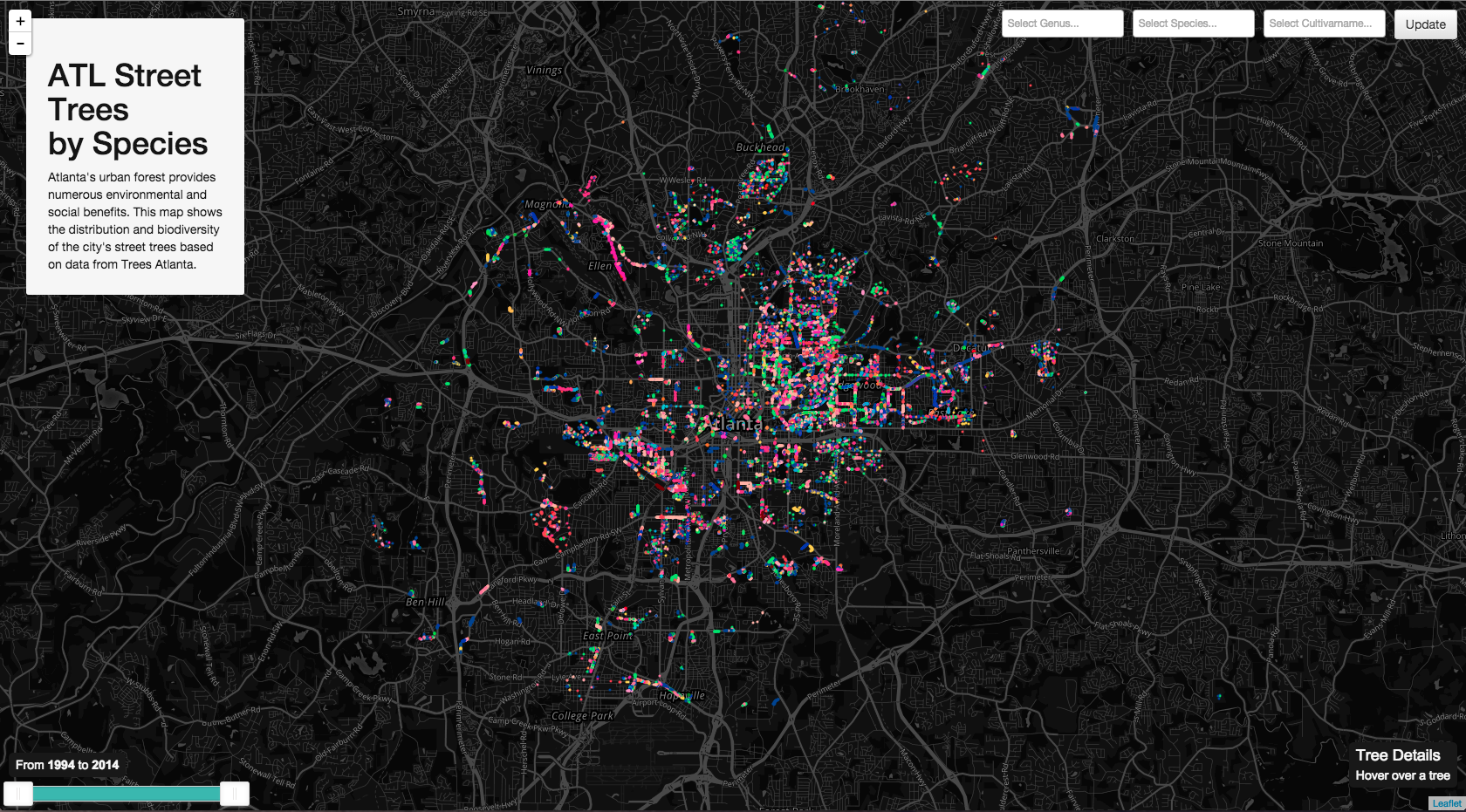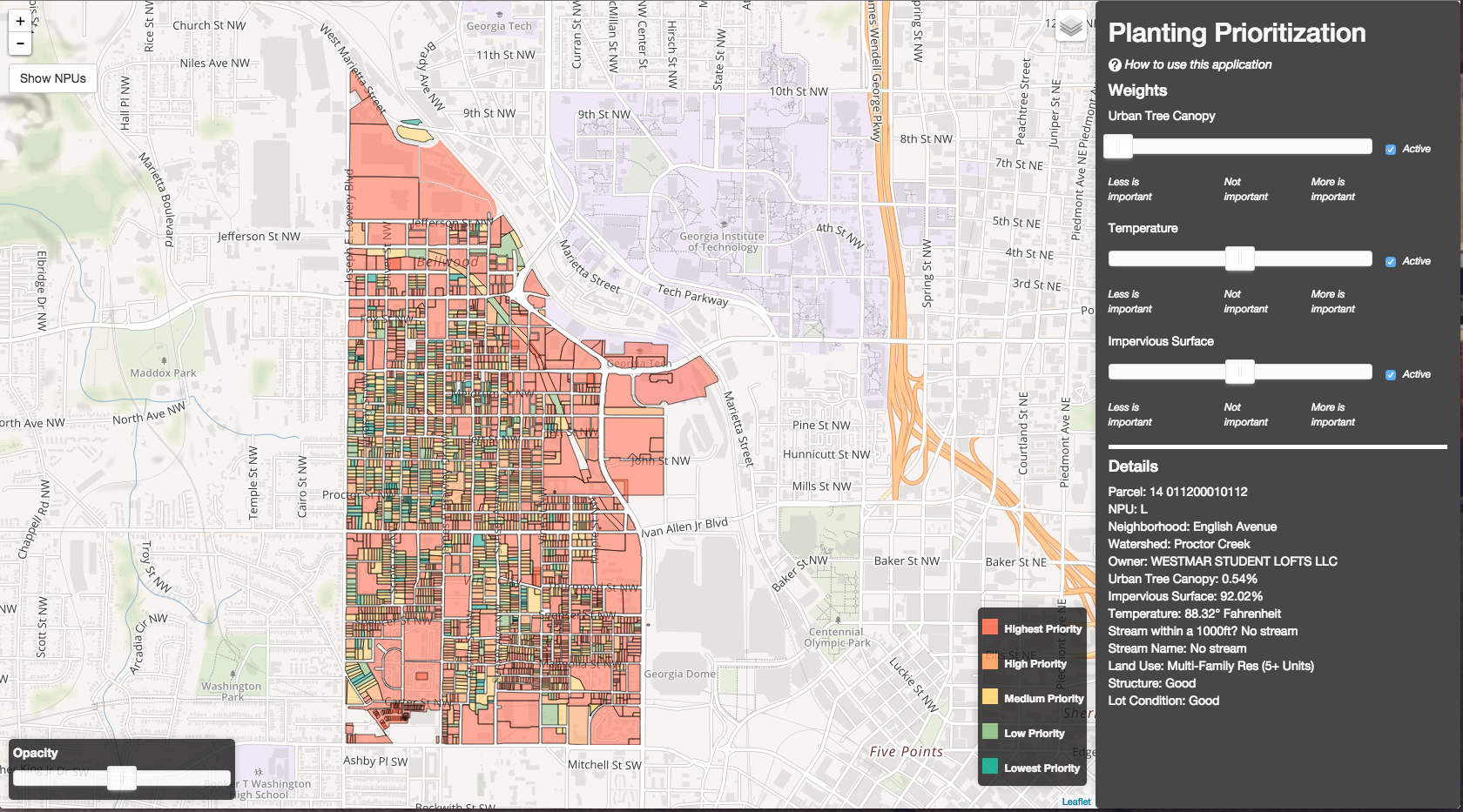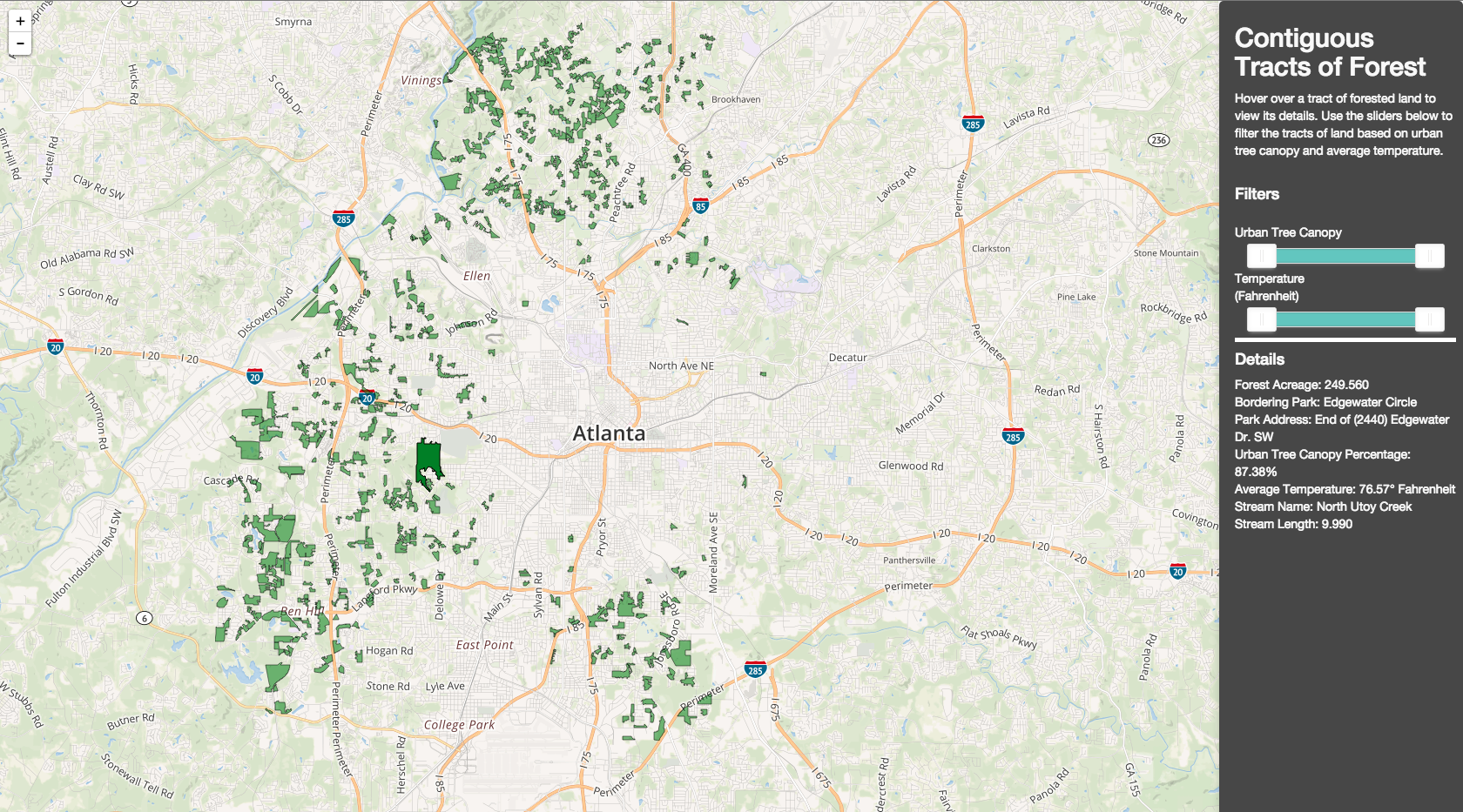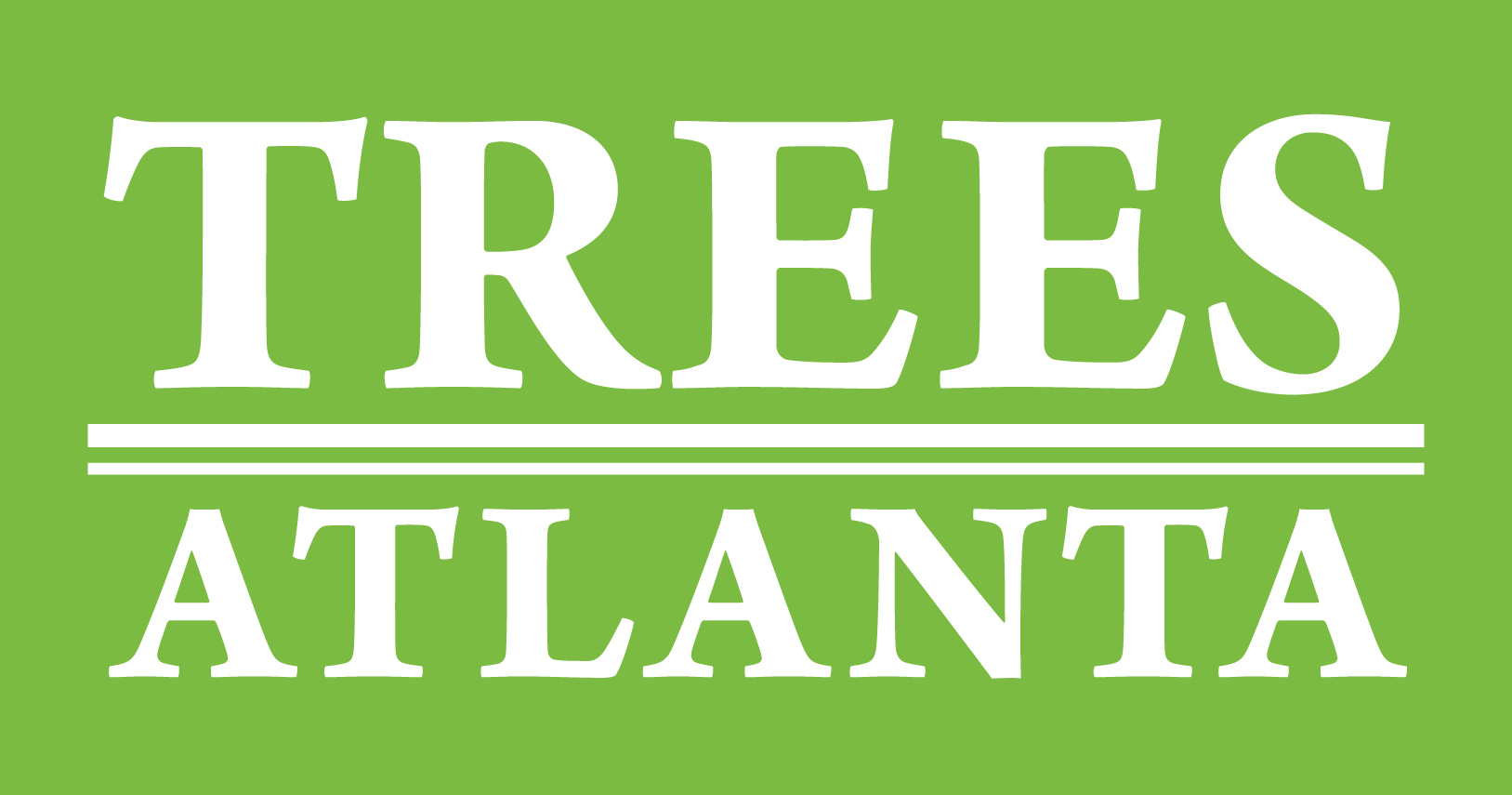
Biodiversity
Interact with trees planted by Trees Atlanta from 1994 to 2014. Use filters to explore by year and species. Search by address. Use the same interaction tool to explore the Downtown Tree Inventory here.You can also explore the biodiversity of Trees Atlanta plantings broken down by NPU here.

Planting Prioritization
Interact with City of Atlanta parcels, or properties, by Neighborhood Planning Unit and see the amounts of urban tree canopy and impervious surfaces, temperature, and other details.

Conservation
Interact with contiguous tracts of forested land in the City of Atlanta. Learn about surrounding parks, water features, and amounts of urban tree canopy and impervious surfaces.


